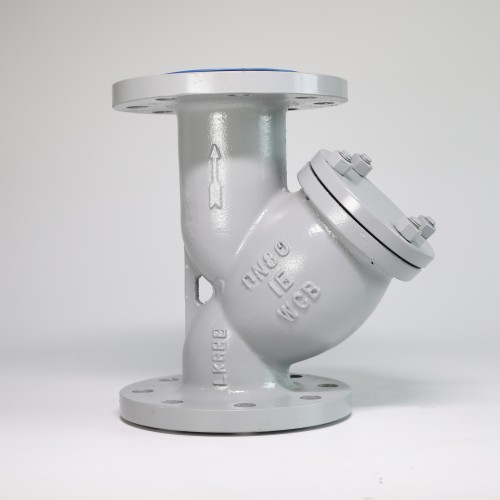Understanding Tee Pipe Fittings for Efficient Plumbing and Piping Solutions
Understanding Tee Pipe Fittings Essential Components for Pipe Systems
Tee pipe fittings are crucial components in the piping systems used across various industries, including plumbing, construction, and manufacturing. These fittings are designed to facilitate the flow of fluids and gases by changing the direction of the pipeline and allowing for the branching of pipes. In this article, we will delve into the essence of tee pipe fittings, discussing their types, applications, advantages, and installation procedures.
What is a Tee Pipe Fitting?
A tee pipe fitting is a type of plumbing connection that creates a branch in the pipeline. As the name suggests, it resembles the letter T, with one inlet and two outlets. These fittings enable the pipeline to branch off at a 90-degree angle, which makes them an efficient choice for directing the flow of liquids or gases from a main line into a secondary line.
Types of Tee Pipe Fittings
Tee fittings are available in various configurations, materials, and sizes to cater to different requirements. The primary types include
1. Equal Tee This type has three openings of the same diameter, allowing for equal flow through all branches. It is commonly used in systems where the pressure needs to be maintained equally across all outlets.
2. Reducing Tee A reducing tee features one outlet that is smaller in diameter than the other two. This design allows a transition from a larger pipe to a smaller one, making it ideal for situations where flow needs to be reduced.
3. Straight Tee Often used in straight-line applications, this type of tee fitting helps maintain a continuous pipeline with branches.
4. Cross Tee While not strictly a tee fitting, the cross tee allows for connections at four points and is used for more complex branching systems.
Material Options
Tee pipe fittings can be made from various materials, including
- PVC (Polyvinyl Chloride) Commonly used in residential plumbing systems because of its resistance to corrosion and affordability. - CPVC (Chlorinated Polyvinyl Chloride) Suitable for hot water applications, CPVC is a superior option to PVC due to its heat resistance. - Metal (Copper, Stainless Steel, Brass) Preferred in industrial applications, metal fittings offer high strength and durability.
- HDPE (High-Density Polyethylene) Used for underground piping systems due to its flexibility and resistance to chemical damage.
Applications of Tee Pipe Fittings
Tee fittings play a significant role in numerous applications
tee pipe fitting

- Plumbing Systems In residential buildings, tees allow for the efficient distribution of water to various fixtures such as sinks, toilets, and showers.
- Industrial Pipelines In factories, tee fittings help manage the flow of gases and liquids in processing plants, ensuring seamless operations.
- Irrigation Systems Tee fittings are essential in agricultural applications where water needs to be distributed efficiently to different sections of a field.
- HVAC Systems In heating, ventilation, and air conditioning systems, tees are used to manage the airflow through ductwork.
Advantages of Using Tee Fittings
Tee pipe fittings come with several advantages
1. Flexibility They provide the flexibility to branch off pipes in different directions, accommodating various design and installation requirements.
2. Space Efficiency Tee fittings take up less space compared to other branching methods, making them ideal for compact installations.
3. Cost-Effective Their straightforward design and easy installation help reduce labor and material costs, making them a budget-friendly option for pipe systems.
4. Versatility Available in different materials and sizes, tee fittings can be used in a wide range of applications, from residential plumbing to large-scale industrial systems.
Installation Considerations
Proper installation is critical for the effective functioning of tee pipe fittings. The process typically involves
- Cutting the Main Pipe Ensure the main pipe is cut cleanly and accurately. - Deburring Remove any burrs from the cut edges to prevent leaks.
- Fitting and Securing Insert the tee fitting, ensuring all connections are tight and leak-free before securing with appropriate methods, such as soldering for metal fittings or solvent welding for PVC.
Conclusion
Tee pipe fittings are integral to a wide range of piping systems, enabling efficient fluid and gas flow management. Understanding their types, materials, applications, and installation processes is essential for anyone involved in plumbing or industrial design. By choosing the right tee fitting for the application, you can ensure optimal performance and longevity in your piping infrastructure. Whether you are a professional plumber, an engineer, or a DIY enthusiast, grasping the significance of tee fittings is vital for achieving reliable and effective piping solutions.
-
The Key to Fluid Control: Exploring the Advantages of Ball Valves in Industrial SystemsNewsJul.09,2025
-
The Versatile World of 1, 2, and 3 Piece Ball ValvesNewsJul.09,2025
-
Stainless Steel Ball Valves: The Ideal Choice for Efficient Flow ControlNewsJul.09,2025
-
Optimizing Fluid Control with Ball Float ValvesNewsJul.09,2025
-
Manual Gate Valves: Essential for Control and EfficiencyNewsJul.09,2025
-
Everything You Need to Know About Butterfly ValvesNewsJul.09,2025
-
The Versatility of Wafer Type Butterfly ValvesNewsJul.08,2025




